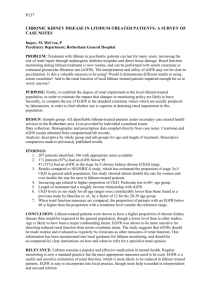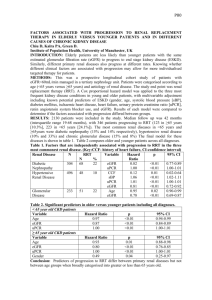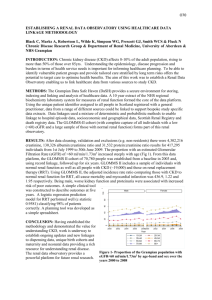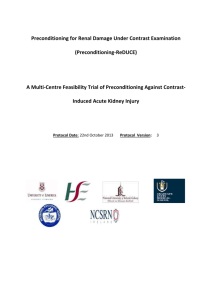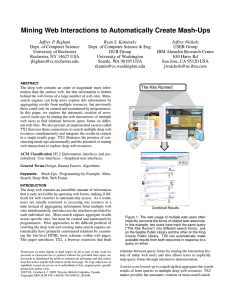Direct Acting Antiviral Drugs in Chronic Hepatitis C and Renal Toxicity
advertisement
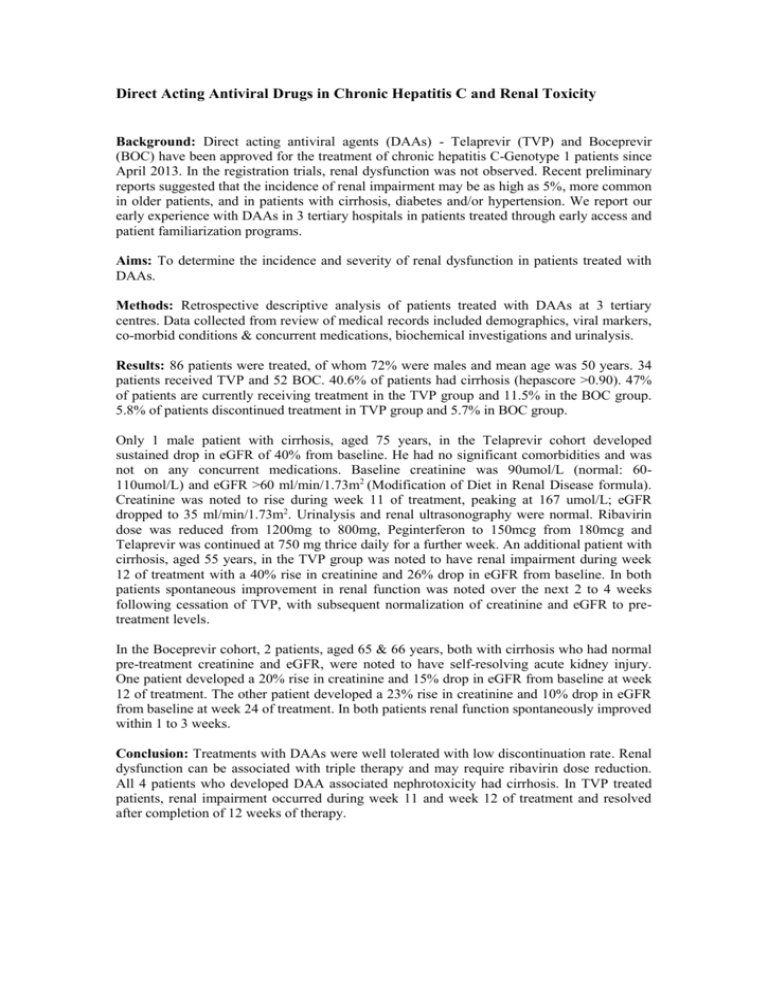
Direct Acting Antiviral Drugs in Chronic Hepatitis C and Renal Toxicity Background: Direct acting antiviral agents (DAAs) - Telaprevir (TVP) and Boceprevir (BOC) have been approved for the treatment of chronic hepatitis C-Genotype 1 patients since April 2013. In the registration trials, renal dysfunction was not observed. Recent preliminary reports suggested that the incidence of renal impairment may be as high as 5%, more common in older patients, and in patients with cirrhosis, diabetes and/or hypertension. We report our early experience with DAAs in 3 tertiary hospitals in patients treated through early access and patient familiarization programs. Aims: To determine the incidence and severity of renal dysfunction in patients treated with DAAs. Methods: Retrospective descriptive analysis of patients treated with DAAs at 3 tertiary centres. Data collected from review of medical records included demographics, viral markers, co-morbid conditions & concurrent medications, biochemical investigations and urinalysis. Results: 86 patients were treated, of whom 72% were males and mean age was 50 years. 34 patients received TVP and 52 BOC. 40.6% of patients had cirrhosis (hepascore >0.90). 47% of patients are currently receiving treatment in the TVP group and 11.5% in the BOC group. 5.8% of patients discontinued treatment in TVP group and 5.7% in BOC group. Only 1 male patient with cirrhosis, aged 75 years, in the Telaprevir cohort developed sustained drop in eGFR of 40% from baseline. He had no significant comorbidities and was not on any concurrent medications. Baseline creatinine was 90umol/L (normal: 60110umol/L) and eGFR >60 ml/min/1.73m2 (Modification of Diet in Renal Disease formula). Creatinine was noted to rise during week 11 of treatment, peaking at 167 umol/L; eGFR dropped to 35 ml/min/1.73m2. Urinalysis and renal ultrasonography were normal. Ribavirin dose was reduced from 1200mg to 800mg, Peginterferon to 150mcg from 180mcg and Telaprevir was continued at 750 mg thrice daily for a further week. An additional patient with cirrhosis, aged 55 years, in the TVP group was noted to have renal impairment during week 12 of treatment with a 40% rise in creatinine and 26% drop in eGFR from baseline. In both patients spontaneous improvement in renal function was noted over the next 2 to 4 weeks following cessation of TVP, with subsequent normalization of creatinine and eGFR to pretreatment levels. In the Boceprevir cohort, 2 patients, aged 65 & 66 years, both with cirrhosis who had normal pre-treatment creatinine and eGFR, were noted to have self-resolving acute kidney injury. One patient developed a 20% rise in creatinine and 15% drop in eGFR from baseline at week 12 of treatment. The other patient developed a 23% rise in creatinine and 10% drop in eGFR from baseline at week 24 of treatment. In both patients renal function spontaneously improved within 1 to 3 weeks. Conclusion: Treatments with DAAs were well tolerated with low discontinuation rate. Renal dysfunction can be associated with triple therapy and may require ribavirin dose reduction. All 4 patients who developed DAA associated nephrotoxicity had cirrhosis. In TVP treated patients, renal impairment occurred during week 11 and week 12 of treatment and resolved after completion of 12 weeks of therapy.
